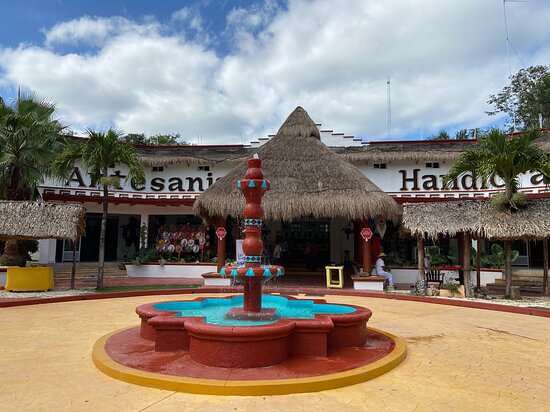Ten traditional Mayan restaurants in Kaua, a small community on the route that links the tourist resorts of Cancún and the Riviera Maya with the archaeological site of Chichen Itzá, are flooded on weekends with visitors eager to sample poc chuc, a traditional dish consisting of citrus-marinated thin pork cutlets served with pickled onions.
That small town in the northern part of the Yucatán Peninsula, located just outside the colonial city of Valladolid and measuring only six kilometers (3.7 miles) in length, is a picture of calm between Monday and Friday, but on weekends during vacation season it is transformed into a tourism mecca.
Long lines form outside each restaurant, with people waiting more than an hour for a table.
For many years, rivalry between traditional cooks in that community prompted them to give their restaurants names such as ‘La Tía de Kaua’ (Kaua’s Aunt), ‘La Verdadera Tía de Kaua’ (Kaua’s Real Aunt) and ‘La Auténtica Tía de Kaua’ (Kaua’s Authentic Aunt).
Now, the surprising success of these eateries has led visitors to dub the town ‘La Ruta de las Tías’ (Route of the Aunts).

“They (the visitors) don’t want any other food. Poc chuc is what they mostly order,” SAID Leovigilda Canul Poot, one of Kaua’s famous “tíias,” explaining why the restaurants focus almost exclusively on that dish.
Nearly 80 and standing just 1.5 meters (4-feet-11) in height, Canul Poot still helps prepare more than 20 kilos of beans a day, makes sure that the corn is just right before being ground for tortillas and regularly checks the kitchen to supervise the process of making poc chuc over a wood-burning fire.
In 2021, despite the pandemic, Chichen Itzá – less than an hour from Valladolid – was México’s most-visited archaeological site with more than 1.6 million domestic and international tourists.
The steady flow of tourists to those Mayan ruins, regarded as one of the seven wonders of the modern world, also has provided a boost to the city of Valladolid, whose centralized location makes it an ideal hub for visits to nearby archaeological sites, the pink-colored lagoons of Las Coloradas, a pink flamingo sanctuary and hundreds of cenotes (deep sinkholes).
Ten minutes away, the town of Tikuch – even smaller than Kaua – is another popular gastronomic destination.
Plenty of poc chuc awaits visitors there just as on the ‘Ruta de las Tías,’ although at restaurants like Achiote Cocina de Humo the main specialty are huge trays filled with traditional dishes like smoked meat of Temozon and smoked pork sausage of Valladolid.

Just like in Kaua, waits are long – occasionally more than two hours – for those who show up without a reservation, said Achiote’s owner, Jonathan Aguilar Cuapio.
That region’s gastronomy, a fusion of Mayan and Spanish culinary traditions, is now being featured in a tourism promotion campaign called ‘365 Flavors of Yucatán,’ an initiative aimed at encouraging visitors to explore one of México’s most representative traditional cuisines.






